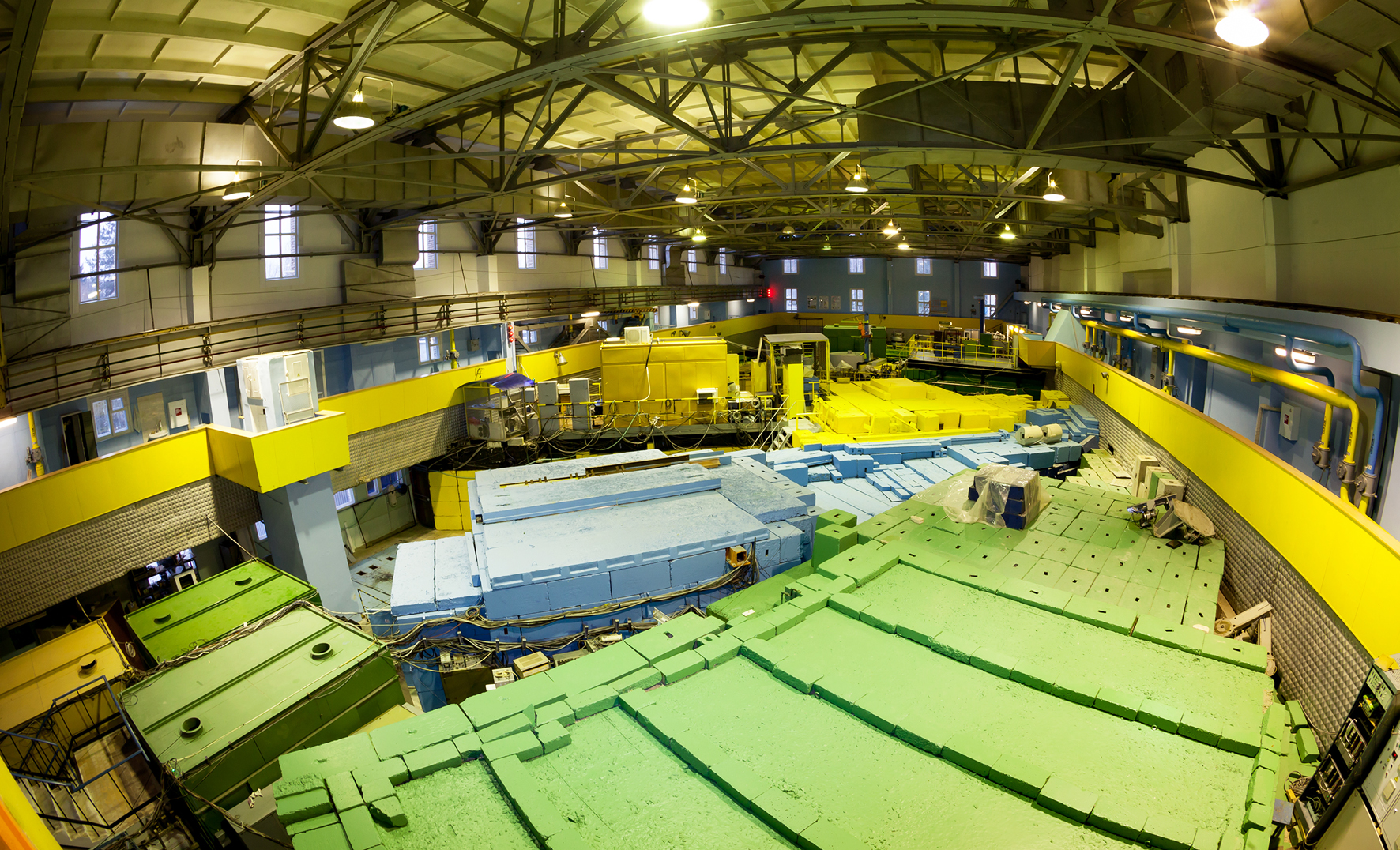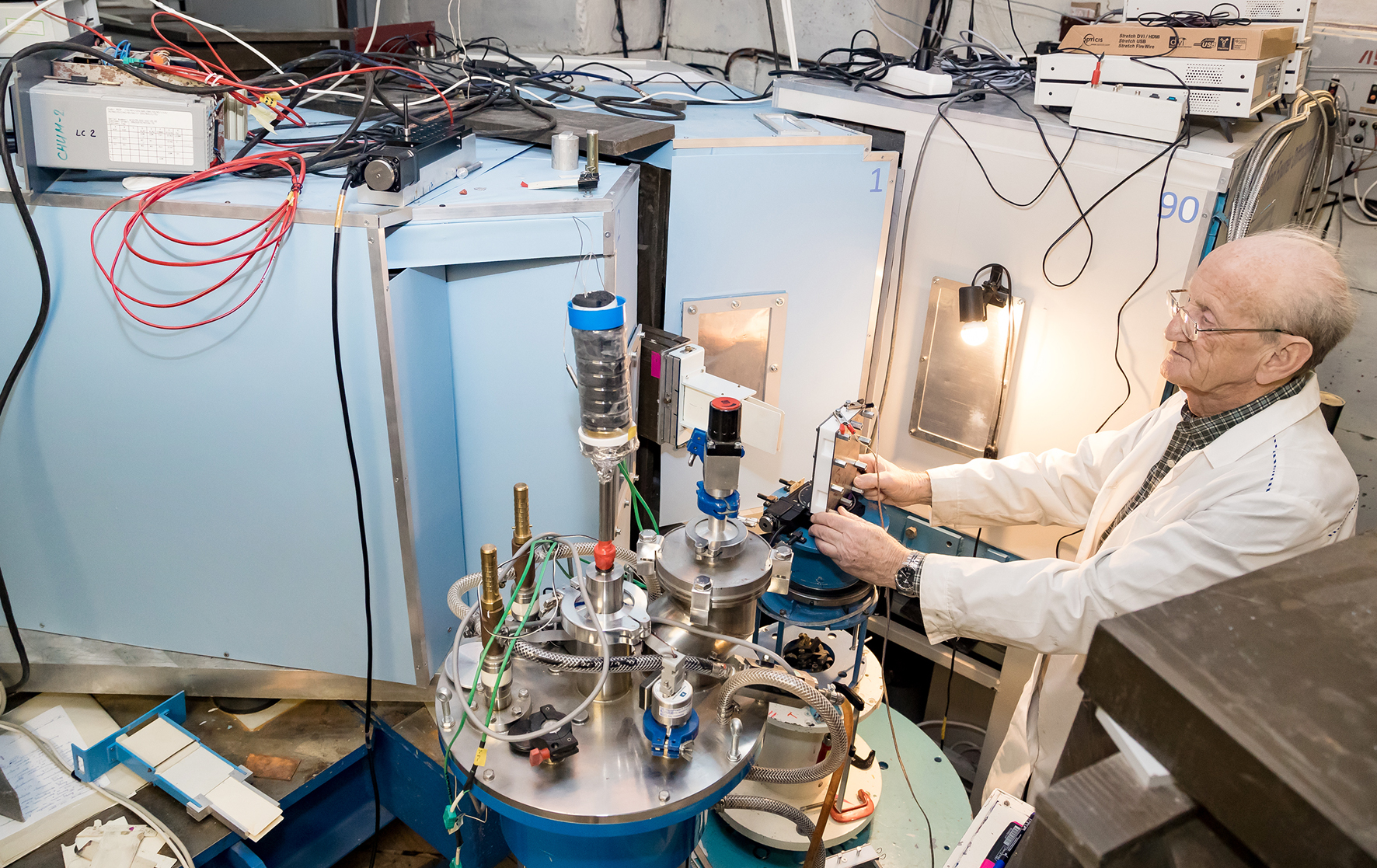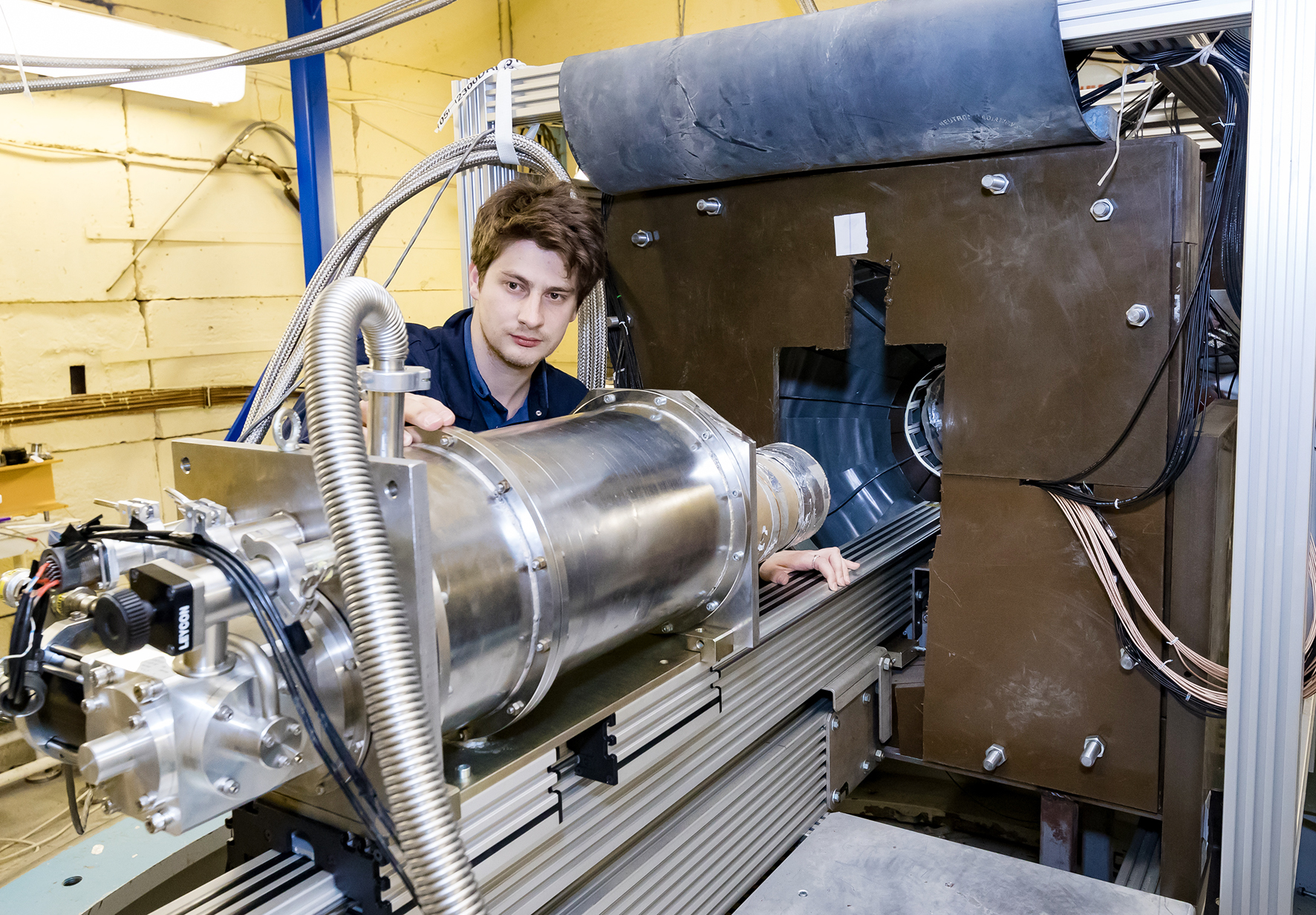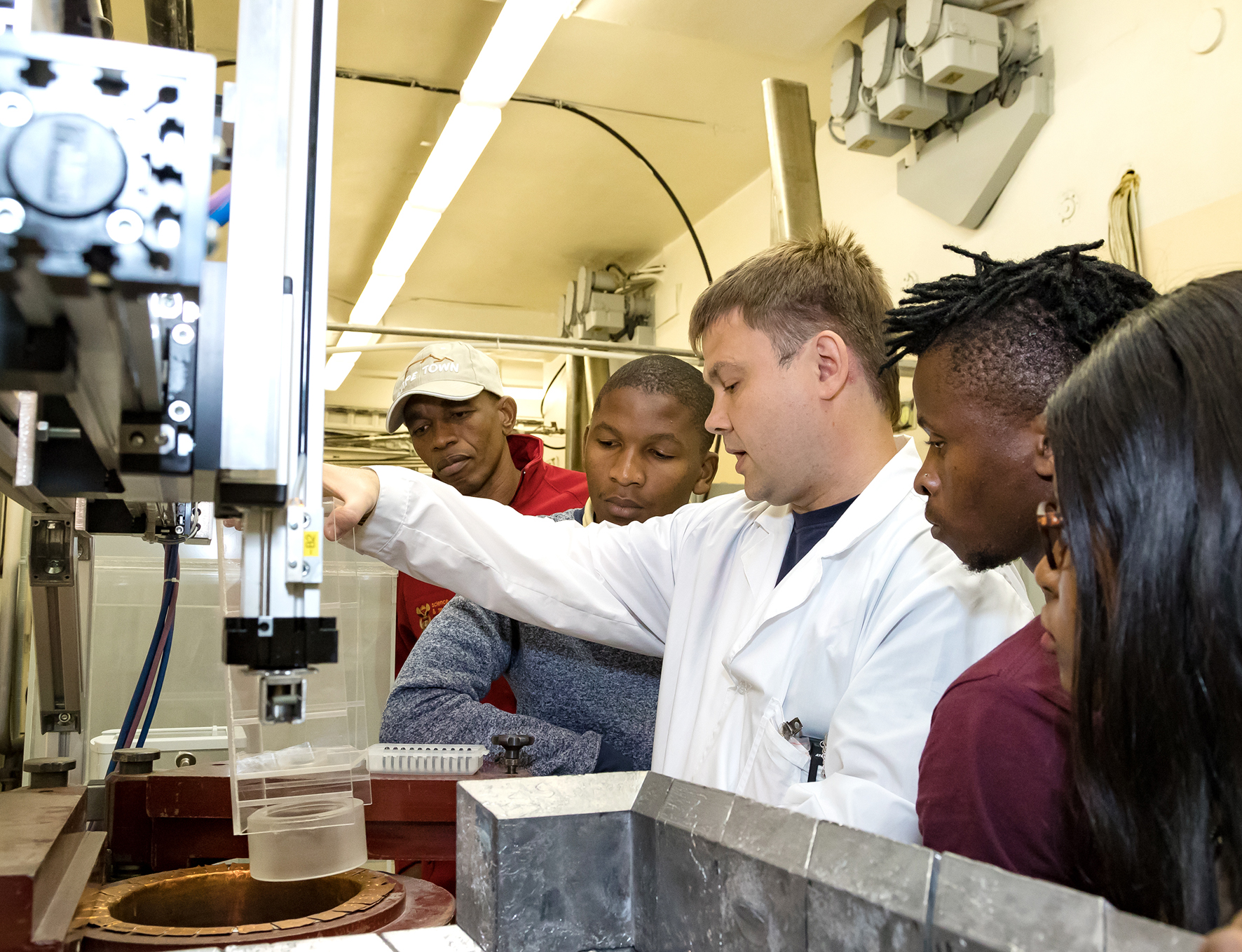FLNP summed up results of the year
News, 23 January 2020
On 27 December, an extended Director’s meeting was held in the Laboratory of Neutron Physics that gathered a large number of FLNP employees. Director of the Laboratory V. N. Shvetsov summed up the results of the expiring year and outlined the tasks for the future.
At the beginning of his report, Valery Nikolaevich focused on key activities of the Laboratory. IBR-2 completed 8 cycles in 2019, which is equal to 2,680 hours of operation per experiment with a plan of 2,500 hours. The peak capacity of the reactor was 1,7 MW instead of the planned 2 MW. There were only two cases of emergency protection warnings both of which caused by low voltage in the city’s power supply network. The KZ-201 cryogenic moderator and the PO-3R reactivity modulator were installed in the laboratory, the latter being placed in the proper place. The director expressed his gratitude to the employees of the mechanical and technological department headed by A. A. Belyakov and to K. A. Mukhin for the completion of the cryogenic moderator and all the work done. Thanks to the support of the Institute’s Directorate, which allocated additional funds, the second cryogenic refrigerator from the Swiss company “Linde” was purchased. The second cryogenic moderator will be brought into operation at the end of 2021, and thus the complex of cryogenic moderators of the IBR-2 facility with reliable automated equipment will become one of the best in the world.
Presenting works in the fields of condensed matter physics (CMP), V. N. Shvetsov reminded that the laboratory started with research in the fields of nuclear physics, and now the statistics of work on CMP research already exceeds that on nuclear and physical research. And this is a global trend. The sensitivity of modern experiments in the CMP field may lead to experiments on supersymmetry and others. To do this, it is necessary to ensure the sensitivity of the facility and the corresponding neutron flux density.
V. N. Shvetsov noted works conducted by the team of the High Resolution Fourier Diffractometer, including those on the study of lithium-ion elements. Elements for these studies are produced in FLNP as far as industrial ones are inconvenient in work. Such works with a potential practical result are highly important for the laboratory now. The Group of Raman Spectroscopy and Microscopy has been established not so long ago but already has a good material base, interacts with other sectors of the laboratory and develops.
“The FLNP budget in 2019 was the highest in the last 6 years.” V. N. Shvetsov highlighted: “It allows us to develop things that bring our experimental facilities to the world level.” He also set the main task: to develop facilities. Specialists of the Department of Spectrometers Complex led by S. A. Kulikov finished the creation of the unique facility: the magnet based on high-temperature superconductivity cooled by the closed cycle cryocooler. The development of the irradiation facility of channel #3 is underway. The director of the laboratory urged employees to create new facilities for small-angle scattering, neutron radiography, on channel #10. “We need specific projects, drawings and plans that can be discussed. The same applies to the new facility on channel #2 for which we already have funding. However, there is still no full understanding of its configuration.” Another task was set to revise and publish the next Blue Book, i.e. the programme of the development of the spectrometers complex at the IBR-2 facility, although V. N. Shvetsov finds it more correct to develop such programmes for all FLNP facilities.
The mission to develop new methods and introduce them in the JINR Member States is now promoted at JINR. Neutron radiography seems promising for this purpose. For example, the modernized WWR-K reactor in Kazakhstan has no experimental equipment at extracted beams, although there is a facility for neutron radiography in Almaty created by FLNP staff members. Nowadays, the laboratory creates such a facility in Tashkent. “We do not create rivals for ourselves. We develop a network of researchers, users.”
Turning to research in the fields of nuclear physics, V. N. Shvetsov spoke about the continuation of the JINR-Rosatom cooperation, including the project of a new neutron source IBR-3. Rosatom began to support Soviet and Russian atomic databases that were abandoned for some time. Now, it is understood that such issues have practical importance. FLNP together with IPPE takes part in this programme.
A fascinating project “TANGRA” allows using tagged neutrons for detection without a reactor. Its leader Yu. N. Kopach proposed to conduct research for nuclear experiments, and its application attracts RSA specialists to FLNP. The IREN facility has already reached a level exceeding 100 MeV, and in 2020, it will operate in the normal mode. It is necessary to stop the process of development and modification, get a licence and allow physicists to work, the director urged. He also highlighted activities of the group of I. M. Frank on neutron optics at the ILL beams (Grenoble). The modernization of the EG-5 accelerator is necessary. It is the first facility of the laboratory, and it is a worthy machine to continue its support. Significant modernization is yet to be done: it is necessary to change the accelerating tube, to implement the project of a microbeam.
Work of the Sector of Neutron Activation Analysis and Applied Research was noted. Traditional activities of the Sector were complemented with the study of the influence of silver nanoparticles on cognitive functions of small laboratory animals. V. N. Shvetsov invited colleagues to establish contacts with a new LRB Director, to involve specialists of this laboratory in the use of neutron sources, although it is not easy, as far as biologists demand clear effects while it is not a simple task to distinguish between neutrons and gamma radiation. He highly appreciated the work “Cleaning of complex industrial effluents”, the study of cultural heritage objects by nuclear and physical methods. The Sector of Neutron Activation Analysis started to develop the latter at the IREN facility, and such studies fit the global trend. In November 2019, Academician and Advisor of the French Academy of Sciences for Cooperation with Russia and Eurasia Catherine Bréchignac came to Moscow for the RAS meeting. Recently, she visited JINR. She was very interested in FLNP experimental opportunities for the study of archaeological and cultural objects. Nowadays, the participation of FLNP in the creation of a mobile laboratory for the study of archaeological objects by various methods is being discussed.
NIKIET developed the design implementation of two models of a new neutron source. From the NIKIET point of view, the design with an accelerator is much more complex. “In view of this, we decided to focus on the variant of the IBR-3 pulsed reactor based on neptunium with an average power of 12 MW and an average neutron flux on the surface of 1014.” V. N. Shvetsov presented a roadmap for the creation of a new source the launch of which is scheduled for 2037. Concluding the report, he appealed to his colleagues to suggest new themes and directions, projects of new facilities, to present their justifications at seminars and publish results. “Offer! We do not set any restrictions!”
Olga Tarantina, JINR Weekly Newspaper
Photos by Elena Puzynina



